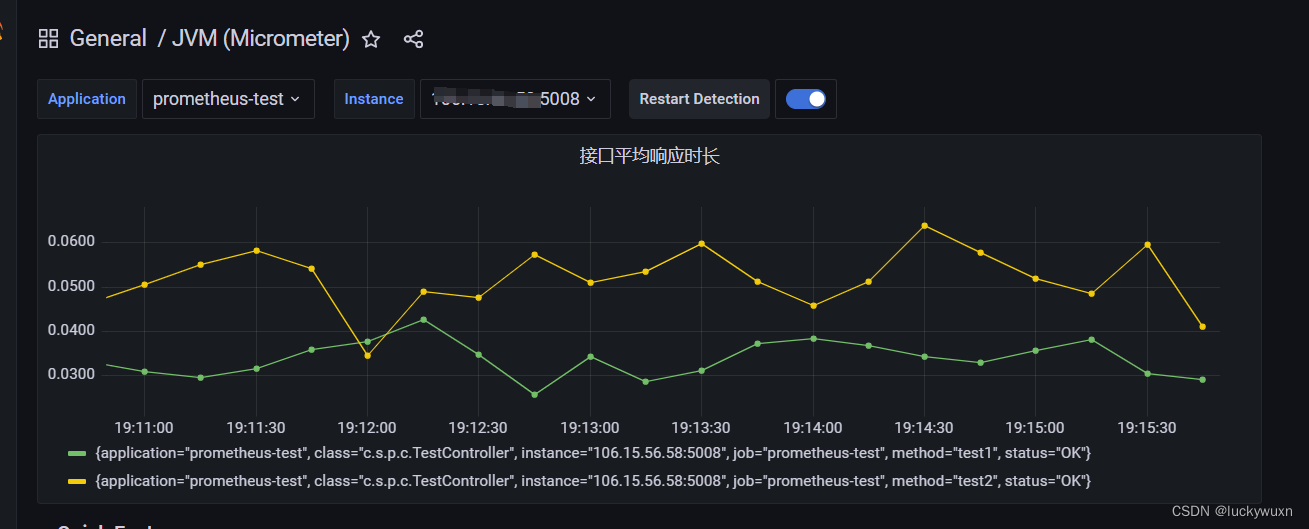
Kotlin Android中错误及异常处理最佳实践
Kotlin在Android开发中的错误处理机制以及其优势
-
Kotlin具有强大的错误处理功能:Kotlin提供了强大的错误处理功能,使处理错误变得简洁而直接。这个特性帮助开发人员快速识别和解决错误,减少了调试代码所需的时间。
-
Kotlin的错误处理特性:Kotlin具有一些错误处理特性,如Null安全(Null Safety)、let、Elvis操作符、延迟初始化(late initialization)以及使用
as?操作符进行安全类型转换。文章还提到将会讨论其他高级的错误处理技术。
Kotlin在Android开发中提供了强大的错误处理功能,包括处理异常和其他错误的方法,使开发人员能够更容易地识别和解决问题。
协程中的异常
协程(coroutine)在出现异常时的行为和异常传播:
- 当协程发生异常时,它会将异常传递给其父协程。
- 父协程在接收到异常后会执行以下操作:
- 取消自身(cancel itself)。
- 取消其余的子协程(cancel the remaining children)。
- 将异常传播给自己的父协程(propagate the exception up to its parent)。
- 一旦异常传播到协程层次结构的顶部,所有由CoroutineScope启动的协程都将被取消。
这意味着异常会从发生异常的协程一直传递到协程层次结构的顶部,并导致所有相关的协程被取消。这有助于确保异常能够适当地传播和处理,以维护代码的稳定性和可靠性。
1) 自动取消
import kotlinx.coroutines.*fun main() = runBlocking {val parentJob = GlobalScope.launch {val childJob = launch {throw RuntimeException("Exception occurred in child coroutine!")}try {childJob.join()println("Child job completed successfully")} catch (e: Exception) {println("Caught exception in parent: ${e.message}")}}parentJob.join()println("Parent job completed")
}
在这个示例中,我们有一个父协程(parentJob)启动了一个子协程(childJob)。子协程有意地抛出一个RuntimeException来模拟一个失败的情况。
2)取消保留的子协程
import kotlinx.coroutines.*fun main() = runBlocking {val parentJob = GlobalScope.launch {val childJob1 = launch {delay(1000)throw RuntimeException("Exception occurred in child job 1!")}val childJob2 = launch {delay(2000)println("Child job 2 completed successfully")}val childJob3 = launch {delay(3000)println("Child job 3 completed successfully")}try {childJob1.join()} catch (e: Exception) {println("Caught exception in parent: ${e.message}")}}parentJob.join()println("Parent job completed")
}
在这个示例中,我们有一个父协程(parentJob)启动了三个子协程(childJob1、childJob2、childJob3)。第一个子协程在延迟之后故意抛出一个RuntimeException,模拟一个失败的情况。
3) 将异常传播给其父协程
import kotlinx.coroutines.*fun main() = runBlocking {val parentJob = GlobalScope.launch {val childJob = launch {throw RuntimeException("Exception occurred in child coroutine!")}try {childJob.join()} catch (e: Exception) {println("Caught exception in parent: ${e.message}")throw e // Rethrow the exception}}try {parentJob.join()} catch (e: Exception) {println("Caught exception in top-level coroutine: ${e.message}")}println("Coroutine execution completed")
}
在这个示例中,父协程启动了一个子协程,该子协程有意地抛出一个RuntimeException。当子协程中发生异常时,它将异常传递给其父协程。
使用密封类进行错误处理
密封类提供了一种强大的方式来模拟Kotlin中的错误类。
通过定义一个密封类层次结构,表示应用程序中所有可能的错误,您可以轻松地简洁有效地处理错误。
sealed class AppState {object Loading : AppState()object Ready : AppState()object Error : AppState()
}
fun handleAppState(state: AppState) {when (state) {is AppState.Loading -> {// Do something when the app is loading}is AppState.Ready -> {// Do something when the app is ready}is AppState.Error -> {// Do something when the app has an error}}
}
这段代码包括一个名为handleAppState的函数,它管理由AppState表示的各种应用程序状态。它使用when表达式来响应加载(loading)、就绪(ready)和错误(error)状态,执行相应的操作。
函数式错误处理
函数式错误管理是一种重要的方法,它应用了高阶函数。您可以通过将错误处理程序作为输入传递给其他部分,快速开发错误处理逻辑并消除嵌套的if-else语句。
fun <T> Result<T>.onError(action: (Throwable) -> Unit): Result<T> {if (isFailure) {action(exceptionOrNull())}return this}fun loadData(): Result<Data> {return Result.success(Data())}loadData().onError { e -> Log.e("TAG", e.message) }
代码中定义了onError函数,用于处理Result错误,对于失败情况提供了默认操作。成功加载数据会返回一个Result数据对象。当加载数据遇到异常时,示例会记录错误消息。
未捕获异常处理程序
您可以配置一个未捕获异常处理程序来处理应用程序中出现的任何未处理的异常。在应用程序崩溃之前,这种方法允许您记录错误或在应用程序崩溃之前呈现用户友好的消息。
以下是如何配置未捕获异常处理程序的示例:
Thread.setDefaultUncaughtExceptionHandler { thread, throwable ->// Handle the uncaught exception hereLog.e("AppCrash", "Uncaught exception occurred: $throwable")// Perform any necessary cleanup or show an error dialog// ...
}
通过使用Thread.setDefaultUncaughtExceptionHandler,代码创建了一个默认的未捕获异常处理程序。未处理的异常会导致Log.e记录异常的详细信息。这使得能够进行适当的错误呈现或清理操作。
使用Retrofit处理网络错误
通过创建一个独特的错误转换器,您可以在进行网络请求时利用Retrofit的错误处理功能。这使您能够更有系统地处理各种HTTP错误代码和网络问题。
示例如下:
class NetworkException(message: String, cause: Throwable? = null) : Exception(message, cause)interface MyApiService {@GET("posts")suspend fun getPosts(): List<Post>
}val retrofit = Retrofit.Builder().baseUrl(BASE_URL).addConverterFactory(GsonConverterFactory.create()).addCallAdapterFactory(CoroutineCallAdapterFactory()).build()val apiService = retrofit.create(MyApiService::class.java)try {val posts = apiService.getPosts()// Process the retrieved posts
} catch (e: HttpException) {// Handle specific HTTP error codeswhen (e.code()) {404 -> {// Handle resource not found error}// Handle other error codes}
} catch (e: IOException) {// Handle network-related errorsthrow NetworkException("Network error occurred", e)
} catch (e: Exception) {// Handle other generic exceptions
}
在Retrofit网络操作的代码中,定义了NetworkException和MyApiService接口。它通过网络调用来获取帖子,通过try-catch块和适当的错误处理技术来处理与HTTP和网络相关的异常。
使用协程实现优雅的错误处理
在使用协程时,您可以使用runCatching函数执行挂起操作,并优雅地处理任何异常。该函数简化了代码结构,使在同一块内收集和处理异常变得更容易。例如:
suspend fun fetchData(): Result<Data> = coroutineScope {runCatching {// Perform asynchronous operations// ...// Return the result if successfulResult.Success(data)}.getOrElse { exception ->// Handle the exception and return an error resultResult.Error(exception.localizedMessage)}
}// Usage:
val result = fetchData()
when (result) {is Result.Success -> {// Handle the successful result}is Result.Error -> {// Handle the error result}
}
该程序的挂起函数fetchData使用协程执行异步任务。为了处理异常,它使用了runCatching并返回一个Result,该Result要么表示成功并包含数据,要么表示错误并包含错误描述。示例演示了如何使用fetchData并处理成功或错误的结果。
使用RXJava进行错误处理
操作符是RxJava中的功能,允许您处理Observables发出的数据。用于处理错误的RxJava操作符如下:
-
onExceptionResumeNext() -
onErrorResumeNext() -
doOnError() -
onErrorReturnItem() -
onErrorReturn()
结论
Kotlin强大的错误处理能力使开发人员更加简化和高效。其在协程中的异常处理是一个显著的优势。异常无缝传播到协程层次结构的上层,有助于准确处理和取消协程。
通过遵循这些最佳实践并利用Kotlin的错误处理功能,开发人员可以在其Kotlin应用程序中编写更加健壮和可靠的代码。






